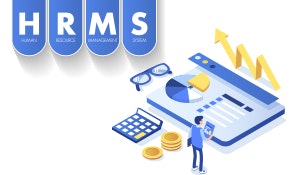Back in the day, it was considered a status symbol to get an engraved watch or pen from the company where one has spent more than 20-30 years. While the practice continues in the form of plaques and certificates of excellence, the level of aspiration for such awards has changed. Gone are the days when bonuses and good compensation packages alone were enough to attract and retain employees. Today’s millennial generation wants much more and that is being reflected in how the rewards & recognition space has been changing dramatically over the years. Here are the top four trends that are dominating the workplaces today.
From top-down recognition to value-based recognition: One of the hallmarks of the earlier reward programs was that it was always top-down. Any appreciation and recognition for your work came from your boss or any senior leaders that you interacted with. Today, employees seek not only top-down recognition, but also appreciation from their peers. Peers know what you do day-to-day and hence their appreciation for your efforts is much more meaningful. According to the State of Employee Recognition 2012 by Bersin & Associates, recognition indicates a much more measurable role in business performance than previously indicated.
Few companies in the world tie their recognition programs with their values. By doing so, the company will be able to identify the type of behaviours that is important to the well-being of the company. It could be enhancing customer relationships, fine-tuning critical processes or helping employees expand their managerial skills. Behaviour motivating recognition programs are on the rise. According to a survey conducted by WorldatWork and ITA Group, 41% of respondents include behaviour-motivating plans in their rewards & recognition programs—a 16% increase from five years ago when such plans first started appearing. So, don’t just reward someone by making them the “Employee of the month”. Rather, give them an award for solving a very specific problem like a tricky customer service. This will encourage the culture of promoting the right behaviours.
The feel-good factor of experience rewards: Rewarding a high performer with cash or merchandise is so yesterday. There are companies that still give away iPhones, luxury cars and exotic vacations, but the effect of such extrinsic rewards does not remain for too long. An article by Ray Fisman in Harvard Business Review mentioned a study that suggested that gifts were far more motivating than cash bonuses to short-term employees effectively paying for themselves by improving productivity. While giving gifts is a good idea, you need a gift that continues to give. You need to try Experience based rewards for your employees under your rewards & recognition program. Experiences like flying a plane, going for a horse riding session, dining on a yacht, taking a cocktail making session or simply going to a resort definitely makes an amazing gift. The social nature of the experience leaves a lasting impression on the employee, who in turn remains happy and engaged. A Gallup research found that recognition motivates 82% of employees to improve their job performance and a major factor that aided increase in employee engagement was regular praise and recognition. If recognition has to be regular, then there has to be a way to witness and experience it as well. This is where Cloud-based rewards & recognition platforms or programs come in, where rewards can be personalised and customised.
Giving Time off: Work-life balance has been a major subject of discussion these days as more and more employees are spending more time at work rather than home. Earlier, a lot of the companies frowned upon employees taking more than a week’s leave. Now, apart from exotic vacations abroad, companies are now looking to help employees with child care, flexible working arrangements, work from home options and even helping you plan your executive education. In order to get millennials to join and stay longer at the company, Grant Thornton has decided that long service leave should be available to employees just after two years rather than 10. Some companies will even pay you to take time off. At Adobe, you can take a sabbatical for every five years of tenure. Boston Consulting Group provides employees with sabbaticals for up to eight weeks after five years at partner level. Consultants who have been with them for more than 12 months can avail voluntary unpaid time off to recharge in an 8-week leave of absence program called Time For You.
Social recognition is the new currency: The problem with rewards & recognition program is that it is finite in nature. There is only so many high performers you can reward. But, what about the rest of the employees? How do you still keep them motivated to come and perform their best for the job? Not just that, millennials constantly seek feedback and acknowledgement. That’s where social recognition comes in. Many organisations are striving to go beyond just recognising the best performers for the quarter or the year. By nature, social recognition allows day-to-day achievements to be seen, commented on and even shared on outside networks. Give them good parking space, put them on your company newsletter, call out their achievements during team meetings and town halls. Josh Bersin writes it rather succinctly: “In Maslow’s Hierarchy of Needs, two of the most valuable psychological needs we have as human beings is the need to be appreciated and the need to “belong.” These needs are met through peer-to-peer thanks and recognition.” While the recognition becomes social in due course, it is personalised to begin with and that sometimes can make all the difference.
About the author
Anu Kurian: A journo by profession and a guest writer for Giftxoxo.com. She has been writing on various functions of HR for several years and has previously worked for publications such as People Matters, Times of India and Business Standard.









